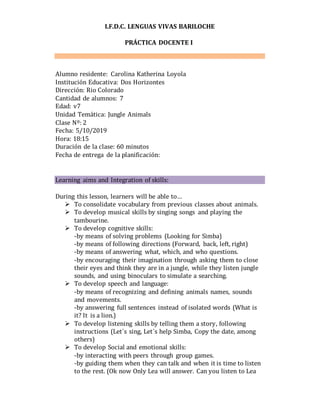The document is a lesson plan for teaching 7 students aged 7 about jungle animals. The 60 minute lesson has 3 main parts: 1) A lead-in story about Simba the lion getting lost in the jungle to review animal vocabulary. 2) An activity where students search the classroom to find animal flashcards and Simba. 3) Singing a song while imitating animal movements. The lesson aims to develop various skills while reviewing jungle animals through interactive and engaging activities.












